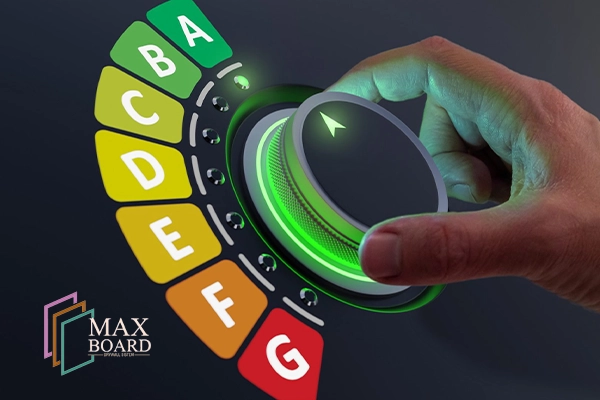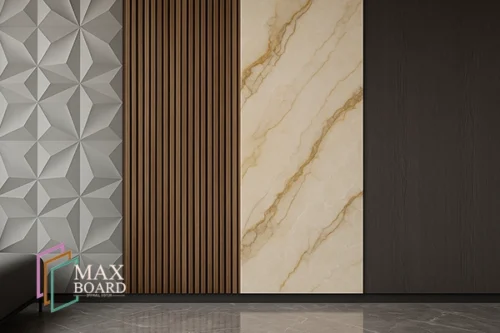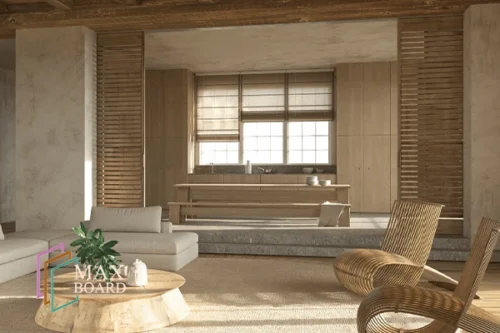Learn how to optimize your home’s energy efficiency in 2025 with energy-efficient homes, renewable energy solutions, and smart home technology. Reduce your utility bills and carbon footprint with these practical tips and upgrades.
Introduction: Why Energy Efficiency Matters in 2025
As we move into 2025, energy efficiency has become more important than ever for homeowners looking to reduce their environmental impact and lower their utility bills. With rising energy costs, climate change challenges, and the growing demand for sustainable living, optimizing your home’s energy consumption is no longer just an option—it’s a necessity. In this guide, we’ll explore how homeowners can enhance their homes’ energy efficiency with modern technologies, renewable energy solutions, and cost-effective upgrades. By taking simple steps today, you can enjoy a more comfortable, eco-friendly, and affordable home in the years to come.
The Role of Smart Home Technology in Energy Efficiency
Smart home technology plays a key role in optimizing energy efficiency in modern homes. With the integration of devices like smart thermostats, energy-efficient lighting, and automated heating and cooling systems, homeowners can significantly reduce their energy consumption.
How Smart Devices Help:
- Smart Thermostats: These devices learn your schedule and adjust the temperature accordingly, ensuring your home is not using energy when it’s unnecessary. They can also be controlled remotely via smartphone apps, giving you full control over your energy use.
- Smart Lighting: Energy-efficient smart bulbs can be controlled via voice commands or mobile apps. With features like motion sensing and automatic dimming, they only use energy when needed.
- Energy Monitoring Systems: These systems track your home’s energy consumption and provide insights into which devices are using the most energy. They help you identify areas for improvement and enable smarter, more efficient use of electricity.
By implementing smart home technologies, you can not only save on energy costs but also contribute to a more sustainable living environment, all while enjoying enhanced convenience and comfort.

Insulating Your Home: The Basics of Thermal Efficiency
Insulation is one of the most important factors when it comes to optimizing your home’s energy efficiency. The goal of insulation is to keep the heat inside during winter and outside during the summer, ensuring your heating and cooling systems don’t have to work overtime. Proper insulation also improves comfort by regulating temperatures throughout the home, reducing drafts, and minimizing noise pollution. Let’s dive deeper into the different types of insulation and how each one works.
Why Insulation Matters:
In colder climates, heating systems can be responsible for a significant portion of your home’s energy consumption. Without proper insulation, heat escapes through walls, ceilings, and floors, forcing your heating system to run longer to maintain a comfortable temperature. In hotter climates, the same applies to cooling systems. Air conditioning units work harder to cool your home when heat constantly seeps inside through uninsulated areas. Insulation acts as a barrier to heat flow, making your home more energy-efficient and helping to reduce long-term energy costs.
Types of Insulation to Consider:
- Fiberglass Insulation
Fiberglass insulation is one of the most commonly used types for home insulation. It’s made from fine fibers of glass and is typically found in rolls or batts. It’s cost-effective and offers great thermal resistance, especially in attics, walls, and floors.- Advantages:
- Affordable and widely available.
- Easy to install.
- Provides excellent heat resistance, reducing the amount of heat transferred between areas of your home.
- Best for:
- Walls, attics, and floors.
- Areas with accessible spaces for installation.
- Advantages:
- Spray Foam Insulation
Spray foam insulation is a highly effective solution for air sealing, as it expands upon application, filling gaps and cracks in walls, ceilings, and around windows. It offers a much higher insulation value compared to fiberglass, and it also helps to prevent the entry of moisture, which can lead to mold growth.- Advantages:
- Provides a tight seal, eliminating gaps and cracks.
- Expands to fill difficult-to-reach areas.
- Acts as both an insulator and a moisture barrier.
- Best for:
- Areas with gaps and cracks, like attics, basements, and crawl spaces.
- Houses with irregular shapes or hard-to-reach spaces.
- Advantages:
- Rigid Foam Insulation
Rigid foam insulation is made from materials like polystyrene or polyurethane. It’s used in areas where insulation needs to provide both thermal resistance and moisture protection, such as exterior walls, foundation walls, and floors.- Advantages:
- Provides excellent thermal resistance (R-value).
- Can be used in areas that are difficult to insulate with other methods, like foundations and basements.
- Best for:
- Exterior walls, basements, and foundations.
- Under floors or in places where moisture resistance is critical.
- Advantages:
- Reflective Insulation
Reflective insulation is typically installed in attics and helps to reflect radiant heat away from your home. Unlike other forms of insulation that resist heat transfer through conduction, reflective insulation works by reflecting the heat that strikes it, which helps to keep your home cooler in hot climates.- Advantages:
- Keeps your home cooler in the summer by reflecting radiant heat.
- Often used in combination with other types of insulation for maximum effect.
- Best for:
- Attics and areas with high solar heat gain.
- Homes in warmer climates where cooling costs are a concern.
- Advantages:
- Cellulose Insulation
Cellulose insulation is made from recycled paper and is treated with fire-retardant chemicals. It’s blown into attics and walls and provides excellent coverage, filling gaps and cracks effectively.- Advantages:
- Eco-friendly and made from recycled materials.
- Provides excellent coverage for hard-to-insulate areas.
- Best for:
- Attics, walls, and ceilings.
- Those who are looking for an environmentally-friendly insulation option.
- Advantages:
Additional Tips for Better Insulation:
- Focus on the Attic: Most heat loss happens through the attic. Ensure it’s properly insulated to prevent your heating system from working harder than necessary.
- Seal Gaps and Cracks: Even the best insulation won’t perform well if there are gaps or cracks around windows, doors, and walls. Use weatherstripping and sealant to close these gaps.
- Consider Insulating Your Doors: External doors can be a major source of energy loss. Consider installing energy-efficient doors with insulation built into the structure or adding door sweeps.
- Reflective Foil for Hot Climates: If you live in a warmer climate, consider installing reflective foil or radiant barriers in the attic. They can significantly reduce the amount of heat entering your home.
Proper insulation is a simple yet highly effective way to make your home more energy-efficient. By choosing the right insulation materials and applying them strategically throughout your home, you can significantly reduce your heating and cooling costs while improving comfort and air quality. Whether you’re upgrading existing insulation or installing new insulation during construction, it’s an investment that pays off in both savings and sustainability.
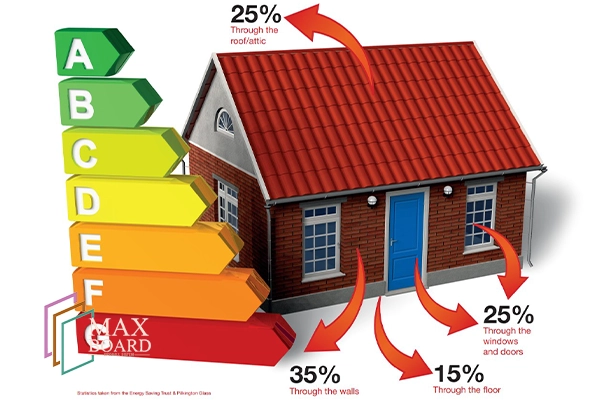
Insulating Your Home: The Basics of Thermal Efficiency
Insulation is one of the most effective and cost-efficient ways to optimize your home’s energy efficiency. It works by creating a barrier between your indoor space and the outdoor elements, preventing the transfer of heat. During the winter, it keeps warm air inside, and in the summer, it prevents the hot air from entering. This helps reduce the amount of energy needed to heat or cool your home, leading to lower utility bills.
Without proper insulation, your heating and cooling systems have to work harder to maintain a comfortable indoor temperature, resulting in higher energy consumption and unnecessary costs.
How Insulation Improves Thermal Efficiency:
When properly installed, insulation ensures that the temperature inside your home stays regulated. Without insulation, air can escape through the walls, ceiling, and floors, causing your HVAC system to work harder, consume more energy, and increase your carbon footprint. By improving thermal efficiency, insulation can reduce the overall energy consumption of your home.
Types of Insulation to Consider:
- Fiberglass Insulation
Fiberglass is one of the most commonly used materials for insulation, thanks to its affordability and efficiency. It consists of tiny glass fibers that trap air, which reduces the amount of heat that can pass through walls, attics, and floors. Fiberglass insulation is typically installed in batt or blanket form, making it easy to handle and install. It works particularly well for attics and exterior walls, where most heat loss occurs.- Benefits of Fiberglass Insulation:
- Cost-effective and readily available
- Resistant to heat flow, offering great thermal resistance (R-value)
- Non-combustible, making it safe in case of fire
- Benefits of Fiberglass Insulation:
- Spray Foam Insulation
Spray foam is a liquid form of insulation that expands into a foam once applied, filling gaps and cracks in walls, ceilings, and floors. It’s known for its superior air-sealing properties. Spray foam insulation provides excellent resistance to heat loss and air leaks, which makes it perfect for attics, basements, and areas with difficult access.- Benefits of Spray Foam Insulation:
- Expands to fill gaps and cracks, creating a tighter seal
- Provides high R-value, offering superior thermal performance
- Great for reducing air leakage and drafts
- Benefits of Spray Foam Insulation:
- Rigid Foam Insulation
This type of insulation is typically used in places like foundation walls, roofs, and under floors. It’s known for its high R-value and excellent moisture resistance, making it ideal for areas exposed to weather. Rigid foam boards are available in different thicknesses and can be installed in a variety of building applications, including the exterior of walls.- Benefits of Rigid Foam Insulation:
- Highly durable and long-lasting
- Provides high thermal resistance with low thickness
- Effective in preventing moisture penetration, which is crucial for areas like basements
- Benefits of Rigid Foam Insulation:
- Reflective Insulation
Reflective insulation, also known as radiant barrier insulation, is designed to reflect heat away from the house, making it particularly effective in hot climates. It works by reflecting the radiant heat from the sun that hits your home’s roof, preventing it from entering the building. This type of insulation is often used in attics or in areas where heat buildup is common.- Benefits of Reflective Insulation:
- Reflects radiant heat, preventing it from entering the house
- Perfect for warmer climates, reducing cooling costs
- Easy to install in attics and other areas exposed to sunlight
- Benefits of Reflective Insulation:
Insulating Key Areas of Your Home:
- Attics and Roofs
Heat rises, and without proper insulation in the attic, you’ll lose a significant amount of warm air during the winter months. Insulating your attic properly is one of the most important steps to improving your home’s energy efficiency. Using materials like fiberglass batt or spray foam in the attic floor can prevent heat loss and save on heating costs. - Exterior Walls
Insulating the exterior walls of your home is crucial for preventing heat from escaping during cold weather and keeping your home cool during the summer. Insulation materials like rigid foam boards, fiberglass batts, or spray foam can help significantly reduce the amount of heat transfer. - Floors and Crawl Spaces
If your home has an uninsulated floor or a crawl space, it’s essential to add insulation to these areas. Floor insulation prevents drafts and helps maintain a comfortable indoor temperature. It also prevents the ground from affecting the temperature of your home. - Windows and Doors
While not technically “insulation,” making sure that your windows and doors are properly sealed can drastically improve energy efficiency. Installing double-glazed windows or weatherstripping around doors and windows will prevent air leaks and improve your home’s overall insulation.
Long-Term Benefits of Proper Insulation:
- Lower Utility Bills: Proper insulation helps your HVAC system perform optimally, reducing energy consumption and leading to lower heating and cooling costs.
- Increased Comfort: Insulation keeps your home at a consistent temperature, making it more comfortable year-round.
- Extended HVAC Lifespan: When your HVAC system doesn’t have to work as hard, it lasts longer and requires fewer repairs.
- Environmentally Friendly: By reducing energy use, proper insulation contributes to a lower carbon footprint, making your home more eco-friendly.
📌 Tip:
When considering insulation, always look for materials that have a high R-value (thermal resistance). The higher the R-value, the better the insulation’s performance.
Upgrading Your Windows and Doors for Better Energy Conservation
Upgrading your windows and doors is one of the most effective ways to enhance your home’s energy efficiency. Windows and doors are the primary entry points for heat loss or gain, so upgrading them can make a huge difference in maintaining a stable indoor temperature and reducing energy consumption.
Why Upgrading Windows and Doors is Crucial:
- Energy Loss: Traditional windows and doors often have poor insulation, allowing cold air to seep in during winter and cool air to escape during summer.
- Air Leaks: Cracks around old windows and doors can cause drafts, making it harder for your HVAC system to maintain the right temperature.
- Increased Heating and Cooling Costs: Poorly insulated windows and doors force heating and cooling systems to work harder, resulting in higher energy bills.
By upgrading to modern, energy-efficient windows and doors, you can drastically reduce energy loss and save money on your utility bills.
What to Look for When Upgrading Windows and Doors:
- Double or Triple Glazing
Double-glazed windows are a popular choice for energy efficiency. They consist of two panes of glass with an insulating gas layer in between, which helps prevent heat transfer. Triple-glazed windows offer even better insulation by adding an additional layer of glass.- Benefits:
- Reduces heat transfer, keeping your home warmer in the winter and cooler in the summer.
- Improves soundproofing, which is particularly useful in noisy areas.
- Benefits:
- Low-E Glass Coatings
Low-emissivity (Low-E) glass coatings are applied to the glass surface to reduce the amount of infrared and ultraviolet light passing through without reducing the amount of visible light. This helps in controlling heat flow and also protects your interior from fading.- Benefits:
- Reduces heat transfer and helps with temperature regulation.
- Blocks harmful UV rays, protecting your furniture and flooring from fading.
- Benefits:
- Energy Star Ratings
Look for windows and doors that are labeled with the Energy Star rating. This ensures that they meet strict energy efficiency guidelines set by the Environmental Protection Agency (EPA).- Benefits:
- Lower energy bills due to reduced heating and cooling needs.
- Environmentally friendly, as they help reduce carbon emissions.
- Benefits:
- Proper Sealing
Ensure that the windows and doors are properly sealed to prevent air leaks. Weatherstripping and caulking around the edges can fill in any gaps that might allow drafts to enter.- Benefits:
- Prevents air leaks and keeps indoor temperatures consistent.
- Increases comfort by reducing drafts and cold spots.
- Benefits:
How Energy-Efficient Windows and Doors Can Save You Money:
- Lower Energy Bills: By preventing heat loss and maintaining a consistent indoor temperature, upgraded windows and doors reduce the workload on your HVAC system, resulting in lower energy consumption and reduced utility costs.
- Increased Home Value: Energy-efficient windows and doors are an attractive feature for potential buyers and can increase the resale value of your home.
- Long-Term Investment: While the initial cost of upgrading may be higher, the savings on your energy bills over time will more than make up for the investment.
Additional Tips for Upgrading:
- Choose the Right Frame Material: Frame materials like vinyl, fiberglass, or wood have better insulation properties than traditional aluminum frames.
- Consider Your Local Climate: Choose windows and doors designed to perform well in your specific climate conditions. For example, windows with a high solar heat gain coefficient are ideal for cooler climates, while those with a low solar heat gain coefficient work better in hotter climates.
Upgrading your windows and doors to energy-efficient options is one of the best ways to optimize your home’s energy efficiency. With the right materials and technologies, you can reduce energy loss, lower utility bills, and make your home more comfortable year-round.
Choosing Energy-Efficient Appliances for the Modern Home
When it comes to optimizing your home’s energy efficiency, upgrading your appliances is one of the most effective strategies. Energy-efficient appliances not only help you reduce energy consumption but also contribute to lowering your utility bills and minimizing your environmental impact.
Why Choosing Energy-Efficient Appliances Is Important:
- Lower Energy Bills: Energy-efficient appliances consume less power, which directly leads to reduced electricity costs.
- Environmental Impact: Using less energy helps reduce carbon emissions, contributing to a greener planet.
- Long-Term Savings: Although energy-efficient appliances may cost more upfront, their efficiency and durability result in savings over time.
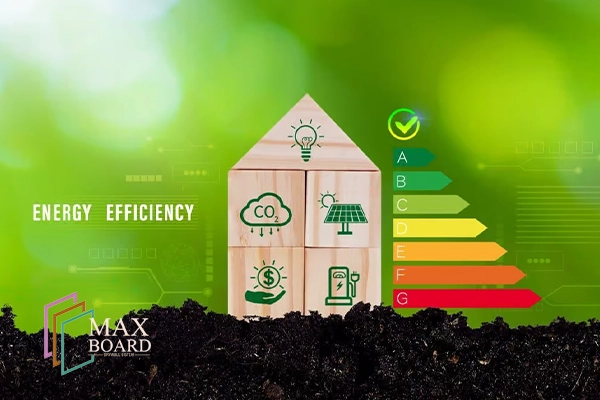
Key Features to Look for in Energy-Efficient Appliances:
- Energy Star Certification
Look for appliances with the Energy Star label, which means the product has met strict efficiency guidelines set by the U.S. Environmental Protection Agency (EPA). These products typically use at least 10-50% less energy than standard models, depending on the appliance.- Benefits:
- Lower energy consumption.
- Helps reduce greenhouse gas emissions.
- Eligible for government rebates or incentives in many regions.
- Benefits:
- Inverter Technology
Appliances with inverter technology (such as refrigerators, air conditioners, and washing machines) use variable-speed motors to adjust power consumption based on demand. This technology helps reduce energy wastage and improves the overall efficiency of the appliance.- Benefits:
- Reduced electricity consumption.
- More consistent and quieter performance.
- Increased durability and longevity.
- Benefits:
- Smart Appliances
Smart appliances offer enhanced energy management capabilities. For example, smart refrigerators can regulate their cooling based on usage patterns, while smart washing machines optimize water and energy use based on load size and fabric type.- Benefits:
- Better control over energy usage.
- Remote monitoring and control via smartphone apps.
- Integration with home automation systems to automate energy-saving routines.
- Benefits:
- Efficient Water Heating Systems
Water heating is a significant energy consumer in most homes. Upgrading to tankless water heaters or solar water heaters can drastically reduce energy use, as these systems only heat water when needed, rather than maintaining a large tank of hot water.- Benefits:
- On-demand heating reduces wasted energy.
- Lower water heating bills.
- Reduced carbon footprint from using renewable energy sources (in the case of solar water heaters).
- Benefits:
Popular Energy-Efficient Appliances to Consider:
- Energy-Efficient Refrigerators
Modern refrigerators use up to 50% less energy than older models. Look for Energy Star-rated fridges with features like LED lighting and smart temperature controls. - Washing Machines and Dishwashers
High-efficiency washing machines use less water and energy per load. Similarly, modern dishwashers use less water while delivering excellent cleaning performance. - Air Conditioners and Heaters
Look for Energy Star-certified HVAC systems, air conditioners, and space heaters that use advanced technology to maintain indoor comfort with minimal energy consumption. - Smart Thermostats
These devices help optimize the heating and cooling systems in your home by adjusting temperatures based on your schedule, ensuring energy is not wasted when you’re away.
How Energy-Efficient Appliances Save You Money:
- Lower Monthly Bills: Energy-efficient appliances can significantly reduce your monthly utility bills by consuming less power.
- Incentives and Rebates: Many governments offer rebates or tax incentives for purchasing energy-efficient appliances, which helps offset the higher upfront cost.
- Long-Term Investment: With improved durability and reduced energy consumption, these appliances provide long-term savings and value.
Choosing energy-efficient appliances is an important step in optimizing your home’s overall energy efficiency. By selecting the right appliances, you can reduce your environmental impact, lower your energy bills, and create a more comfortable living space. Whether you’re upgrading your refrigerator, washing machine, or HVAC system, investing in energy-efficient appliances pays off in the long run.
Water Conservation: Reducing Energy Consumption through Efficient Water Use
Water conservation plays a significant role in reducing energy consumption in homes. The process of heating water for showers, laundry, dishwashing, and other household activities accounts for a substantial portion of energy use. By improving water efficiency, you can lower your energy bills, reduce your water usage, and contribute to a more sustainable lifestyle.
Why Water Conservation Matters for Energy Efficiency:
- Heating Water Requires Energy: Water heating is typically the second largest energy expenditure in homes after heating and cooling. Reducing the amount of hot water used directly cuts down on energy consumption.
- Energy and Water Are Linked: By using less water, you also reduce the energy needed to pump, treat, and heat that water. This results in double savings on both your water and energy bills.
Effective Ways to Conserve Water and Save Energy:
- Install Low-Flow Showerheads and Faucets
Low-flow showerheads and faucets are designed to reduce water consumption without sacrificing water pressure. By installing these devices, you can significantly reduce the amount of water used while showering and washing hands, leading to a reduction in hot water usage.- Benefits:
- Saves water and energy by reducing the amount of hot water needed.
- Simple to install and affordable.
- Reduces water bills and energy consumption.
- Benefits:
- Upgrade to Energy-Efficient Water Heaters
Traditional water heaters are less efficient than newer models. Upgrading to an Energy Star-rated water heater or a tankless water heater can drastically improve energy efficiency and reduce energy waste.- Benefits:
- Tankless water heaters only heat water when needed, providing hot water on demand.
- Energy Star-rated water heaters consume up to 10% less energy compared to standard models.
- Benefits:
- Use a High-Efficiency Dishwasher and Washing Machine
Energy-efficient dishwashers and washing machines use less water per cycle, which reduces both your water and energy consumption. Additionally, many modern models have eco-friendly settings designed to optimize water and energy use.- Benefits:
- Reduce water and energy consumption.
- Most models provide excellent cleaning power while using less water.
- Energy-efficient machines are also designed to use less detergent, further lowering operational costs.
- Benefits:
- Fix Leaky Faucets and Pipes
Leaky faucets and pipes can waste gallons of water over time, leading to unnecessary energy consumption to heat the wasted water. Fixing leaks promptly can prevent this and save water and energy.- Benefits:
- Reduces water wastage and the need to reheat lost water.
- Low-cost solution that saves on water bills.
- Benefits:
- Rainwater Harvesting
Installing a rainwater harvesting system is a smart way to collect rainwater for use in irrigation, cleaning, and even non-potable uses like flushing toilets. This reduces the demand on your home’s water supply and helps conserve both water and energy.- Benefits:
- Reduces your water bill and the energy needed to process municipal water.
- Helps in sustainable water management.
- Benefits:
Water conservation is an integral part of optimizing energy efficiency in your home. By installing water-saving devices, upgrading your water heater, and using water-efficient appliances, you can reduce both your water and energy consumption. These small changes not only lead to significant savings on your utility bills but also contribute to a more sustainable, eco-friendly lifestyle.
How Insulation Materials Can Make Your Home More Energy Efficient
When it comes to optimizing your home’s energy efficiency, insulation is one of the most important factors. Proper insulation helps regulate the temperature inside your home by preventing heat loss in the winter and heat gain in the summer. Using the right insulation materials can dramatically reduce the energy needed to heat or cool your home, which leads to lower energy bills and a more comfortable living environment.
Why Insulation Matters for Energy Efficiency:
- Minimizes Heat Loss and Gain: Insulation creates a barrier that slows the movement of heat, preventing it from escaping during the winter and preventing it from entering in the summer.
- Reduces the Load on Your HVAC System: When your home is properly insulated, your heating and cooling systems don’t need to work as hard, which prolongs their lifespan and reduces maintenance costs.
- Helps Maintain Consistent Indoor Temperature: Insulation helps to keep indoor temperatures consistent, making your home more comfortable and reducing the need for constant adjustments to your thermostat.
Types of Insulation Materials and Their Benefits:
- Fiberglass Insulation
Fiberglass insulation is one of the most commonly used and affordable insulation materials. It is made from glass fibers and is available in batts, rolls, or loose-fill form. It’s often used in walls, ceilings, and floors.- Benefits:
- Highly effective at preventing heat loss and gain.
- Available in various forms for easy installation.
- Cost-effective and widely available.
- Benefits:
- Spray Foam Insulation
Spray foam insulation is a liquid that expands upon application, filling gaps and cracks to create an airtight seal. It’s perfect for areas with irregular shapes or difficult-to-reach spaces.- Benefits:
- Provides superior air sealing, preventing drafts and heat loss.
- Higher R-value compared to fiberglass, making it more efficient in insulating homes.
- Ideal for attics, basements, and crawl spaces.
- Benefits:
- Rigid Foam Insulation
Rigid foam insulation, typically used in exterior walls, roofs, and foundations, is made from foam boards that offer high thermal resistance (R-value). It is ideal for areas exposed to extreme temperatures.- Benefits:
- High R-value provides excellent thermal resistance.
- Resistant to moisture, making it ideal for areas like basements and foundations.
- Durable and long-lasting.
- Benefits:
- Cellulose Insulation
Made from recycled paper products, cellulose insulation is an eco-friendly option for home insulation. It’s typically installed in attics and walls.- Benefits:
- Made from recycled materials, making it an environmentally friendly choice.
- Provides good coverage and is effective in reducing heat loss.
- Can be treated to be fire-resistant.
- Benefits:
- Reflective or Radiant Barrier Insulation
This type of insulation works by reflecting heat away from the home. It is often used in attics to prevent the sun’s heat from entering the home and raising indoor temperatures.- Benefits:
- Reduces the amount of heat entering the home from the attic.
- Particularly useful in hot climates.
- Can help improve the efficiency of air conditioning systems.
- Benefits:
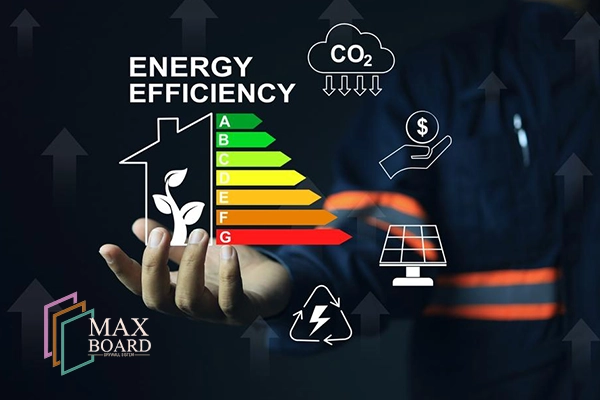
How to Choose the Right Insulation for Your Home:
- Consider Your Climate: Different insulation materials perform better in different climates. For example, fiberglass works well in colder climates, while reflective barriers are more suited to hot climates.
- R-Value: The higher the R-value, the better the material will insulate. Choose materials that match the needs of your home.
- Installation: Some insulation materials, like spray foam, require professional installation, while others, like fiberglass or cellulose, can be installed by homeowners.
- Cost: While higher-quality materials may come at a higher upfront cost, the energy savings in the long term can make it worthwhile.
Choosing the right insulation materials is key to optimizing your home’s energy efficiency. Whether you choose fiberglass, spray foam, or cellulose, properly insulating your home will help maintain a comfortable indoor temperature, reduce your energy bills, and create a more sustainable living environment. Don’t overlook the importance of insulation—it’s one of the most cost-effective solutions for achieving long-term energy efficiency.
Introducing Our Energy-Efficient Products for Your Home
When optimizing your home’s energy efficiency, selecting the right products is crucial. At MaxBoard, we provide a range of high-quality building materials that not only enhance energy efficiency but also offer superior protection and sustainability.
MaxBoard Fire-Resistant Gypsum Boards
Our fire-resistant gypsum boards are designed to provide exceptional thermal insulation while offering excellent fire protection. These boards are perfect for areas where fire safety is a priority, including walls, ceilings, and stairwells. They are also moisture-resistant, ensuring long-term durability.
- Key Features:
- Fire-resistant with high fire ratings, helping to prevent the spread of fire and protect the structure.
- Moisture-resistant properties, making them ideal for use in kitchens, bathrooms, and other high-humidity areas.
- Easy to install and cost-effective, offering significant energy savings.
Moisture-Resistant Gypsum Boards (MR H3)
Our Moisture-Resistant Gypsum Boards are designed to provide superior performance in high-humidity environments. These boards are perfect for areas like bathrooms, kitchens, and basements where moisture can be an issue.
- Key Features:
- Water-resistant core that prevents the growth of mold and mildew.
- Ideal for use in wet areas like kitchens and bathrooms, ensuring longevity and reducing maintenance costs.
- Provides excellent insulation, reducing heating and cooling costs.
Magnesium Oxide (MgO) Boards
Our Magnesium Oxide (MgO) Boards are ideal for creating durable, energy-efficient walls and ceilings. These boards are highly resistant to fire, moisture, and mold, making them perfect for high-risk areas that require added protection.
- Key Features:
- Fire-rated for up to four hours, offering superior protection in high-risk areas.
- Moisture-resistant and mold-resistant, ideal for environments with high humidity.
- Eco-friendly, made from natural minerals, ensuring a low environmental impact.
Contact Us to Learn More About Our Products
At MaxBoard, we are committed to helping you enhance your home’s energy efficiency with the best quality building materials. Whether you’re interested in fire-resistant gypsum boards, moisture-resistant gypsum boards, or MgO boards, our team is ready to assist you in finding the best solutions for your home.
Contact us today to get a free consultation or request a quote tailored to your needs.
External Link: Learn More About Sustainable Construction Solutions
Explore more about the benefits of using sustainable building materials for energy-efficient homes in this informative guide.
Conclusion: Steps You Can Take Today to Make Your Home More Energy Efficient in 2025
Improving your home’s energy efficiency is no longer a luxury, but a necessity in today’s world. With the increasing demand for sustainable living and rising energy costs, making your home more energy-efficient not only saves you money but also reduces your environmental impact. Whether you are looking to reduce your electricity bills, contribute to a greener planet, or simply create a more comfortable home, implementing the steps outlined in this guide will help you achieve those goals.
Key Takeaways:
- Invest in smart home technology to automate energy-saving processes and monitor energy consumption.
- Upgrade insulation with modern materials like fiberglass, spray foam, and rigid foam to prevent heat loss.
- Upgrade windows and doors to energy-efficient models that reduce air leaks and improve insulation.
- Explore renewable energy solutions like solar panels and wind power to reduce reliance on the grid.
- Choose energy-efficient appliances that reduce electricity and water consumption.
By following these steps and upgrading to high-performance materials like fire-resistant gypsum boards, moisture-resistant gypsum boards, and MgO panels, you’ll not only improve your home’s energy efficiency but also contribute to a more sustainable future.

